Robots probably won’t take over the world.
But they will take over Lake Superior State University for three days in March.
In the university’s annual FIRST (For Inspiration and Recognition of Science and Technology) robotics competition, 40 teams of teenagers from high schools all over the state will compete at LSSU March 14 to 16. Teams have been challenged to build industrial-sized robots to compete with other teams in a complicated game. They must also fundraise to support their projects and design a team brand.
The theme of this year’s competition is Crescendo. Two groups of three teams each will use the robots they’ve designed and built to put cubes and cones into a mixer to amplify their music output. The groups will earn additional points if their robots balance or compress their audio channels.
There are a variety of prizes in several categories. But the biggest prize, says Jim Prevasad, director of LSSU robotics, is the opportunity to go on to compete at regional and state competitions and ultimately to be eligible to compete at the world FIRST Robotics competition in Houston, Texas, in April.
Founded in 1989 by inventor Dean Kamen, FIRST® is a global nonprofit organization that prepares young people for their future through a suite of inclusive, team-based robotics programs for pre-K through 12th grade.
“Our thrilling, sports-like challenges build students’ self-confidence and collaborative problem-solving skills and have a proven and lasting impact on STEM (Science, Technology, Engineering and Math) learning and interest,” says the FIRST website.
The robotics competition at LSSU is designed to inspire high school students’ interest in the field of robotics and to introduce them to the robotics degree opportunities at LSSU.
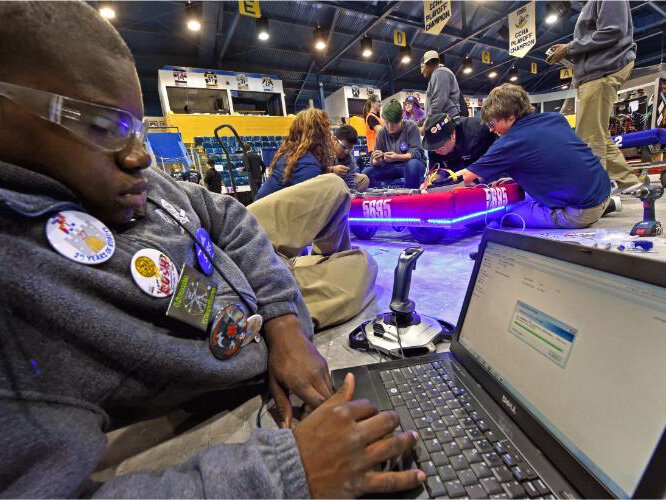 The LSSU FIRST robotics competition in action.
The LSSU FIRST robotics competition in action.
“Geographically, LSSU’s campus is an ideal location to bring teams from both peninsulas together,” says Kimberly Muller, dean of the university’s College of Innovation and Solutions, which hosts the FIRST robotics competition. “This also allows LSSU to show participants and their families how the U.P is a desirable place to learn and live, due to the vast educational and economic opportunities available in the region.”
Robotics at LSSU
In 1985, the university was the first in the United States to offer a bachelor of science degree program in robotics engineering technology. LSSU’s College of Innovation and Solutions now offers a bachelor of science degree in robotics engineering and a concentration in robotics in bachelor of science degree programs in mechanical, electrical and computer engineering. It also offers a concentration in robotics in its manufacturing engineering technology degree program and a bachelor of science degree in mechatronics — an interdisciplinary field of engineering technology that combines mechanical, electrical, computer, robotics, and computer science.
“LSSU continues to be one of the only universities in Michigan to offer a robotics engineering program,” says Muller. “After producing quality graduates for 38 years, LSSU has left a large footprint in the robotics industry.”
Several graduates of LSSU’s robotics programs work for companies in the U.P., such as EMP Engineering, Systems Control, Precision Edge, Timber Products and Billerud.
“They have contributed to making these organizations viable and competitive in the national arena,” Muller adds.
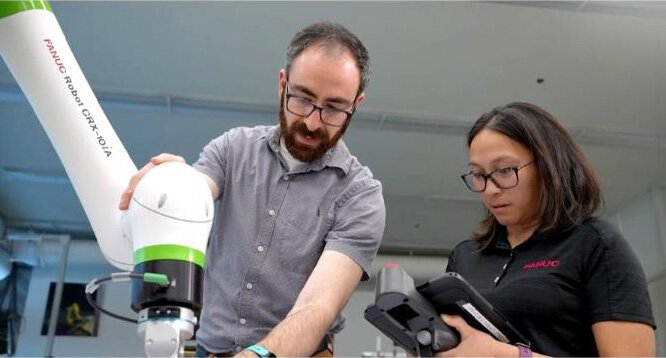 A FANUC “cobot,” a collaborative robot, is among the specialized robots from Fuji Automatic Numerical Control.
A FANUC “cobot,” a collaborative robot, is among the specialized robots from Fuji Automatic Numerical Control.
The robotics programs are supported by a $2 million robotics lab, mostly funded by industries and alumni. Other funding comes from grants, the university and the LSSU Foundation. The lab has specialized robots from FANUC (Fuji Automatic Numerical Control), KUKA (Keller und Knappich Augsburg), UR Company, Doosan Corporation and MiR (Mobile Industrial Robots); programmable logic controllers from Allen Bradley and Siemens; conveyors by Bosch; end-of-arm tools from SCHUNK, Piab Precision Casting Corporation and ATI Technologies, and vision systems from Cognex Corporation and FANUC.
Computer education at LSSU has produced many robotics graduates working in various robotics industries throughout the nation, says Jim Devaprasad, director of robotics at LSSU and a professor in the university’s School of Engineering and Technology. LSSU’s strong industry partnerships have resulted in outstanding job opportunities for graduates, he adds. The average robotics student has two or three job offers before they even graduate, with salaries around $70,000 a year. The companies where LSSU robotics graduates work range from small to large corporations including General Motors, Boeing, Tesla, Amazon Robotics, FANUC Robotics, Nexeer Automotive, KUKA Robotics, JR Automation and Mission Design & Automation.
Drew Hulse is a good example. A senior from Constantine, Michigan, who is pursuing a double degree in mechanical engineering and robotics engineering, he received four offers from different companies during Christmas break, five months before he was even due to graduate. “These companies try to hire LSSU graduates because they know that we are well-prepared for this line of work,” Hulse says.
He has accepted a control engineering position in Holland, Michigan. “I’ll miss the Soo though,” he says.
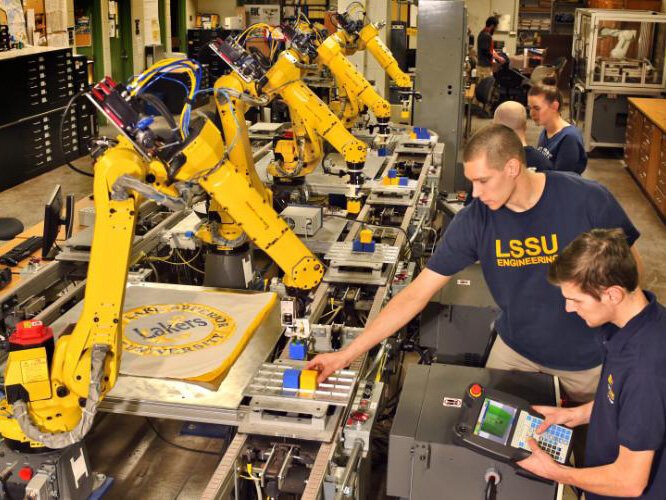 The robotics lab at Lake Superior State University.Some LSSU robotics graduates also pursue further education in graduate engineering programs at the University of Michigan, Michigan State University and Michigan Technological University, Devaprasad says.
The robotics lab at Lake Superior State University.Some LSSU robotics graduates also pursue further education in graduate engineering programs at the University of Michigan, Michigan State University and Michigan Technological University, Devaprasad says.
There are about 80 students in LSSU’s various robotics programs. The majority of them are from Michigan, and about half of those are from northern Michigan or the U.P. Most of the rest come from the states surrounding Michigan or from Ontario.
Demand for robotics specialists
There is a great and growing demand for robotics engineers, specialists and technicians, due to the explosive growth of the robotics industry over the past decade, Devaprasad says. “The robotics field has become an established and stable engineering field, similar to fields like electrical and computer engineering,” he adds.
The use of robotics and automation is helping American industries to be competitive worldwide, Devaprasad says. It has helped industries with the skilled labor shortage. It has also help bring industries and jobs back to the U.S. from abroad.
LSSU robotics graduates are finding jobs in the U.P. because the use of robots is growing in the region. More and more companies are finding advantages in using robots for menial or hazardous tasks, Devaprasad explains. With the labor shortage, robotics has become a viable option to help industries in the U.P.,” he says. Most of the jobs involve the design and implementation of robotics processes for the manufacture of products.
“The field of robotics is constantly evolving and there are always more and more career opportunities opening up,” says robotics engineering student Hulse, who decided to add robotics as a second major to his mechanical engineering program when he saw how much fun some of his friends were having studying robotics. “One thing that stands out to me in this program is that there are so many opportunities to be hands-on,” he says.
“Our robotics programs are designed to produce good learners and citizens who strive to improve the quality of human life, especially by using robotics technologies to improve working conditions—for example, designing and implementing robots to do the hazardous type of jobs while working with humans—or coming up with new robotic processes for human care, such as robotic rehabilitation processes,” says Devaprasad.
LSSU’s FIRST robotics competition and degree programs are priming the pump to provide enthusiastic and skilled talent for the burgeoning world of robotics.



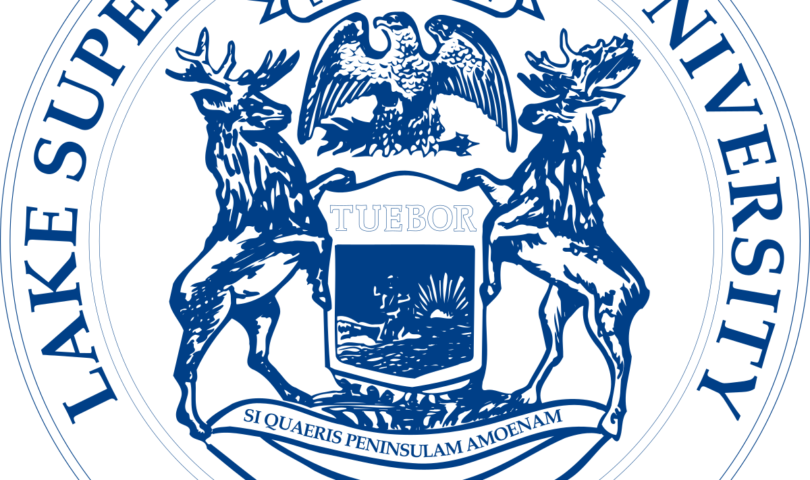

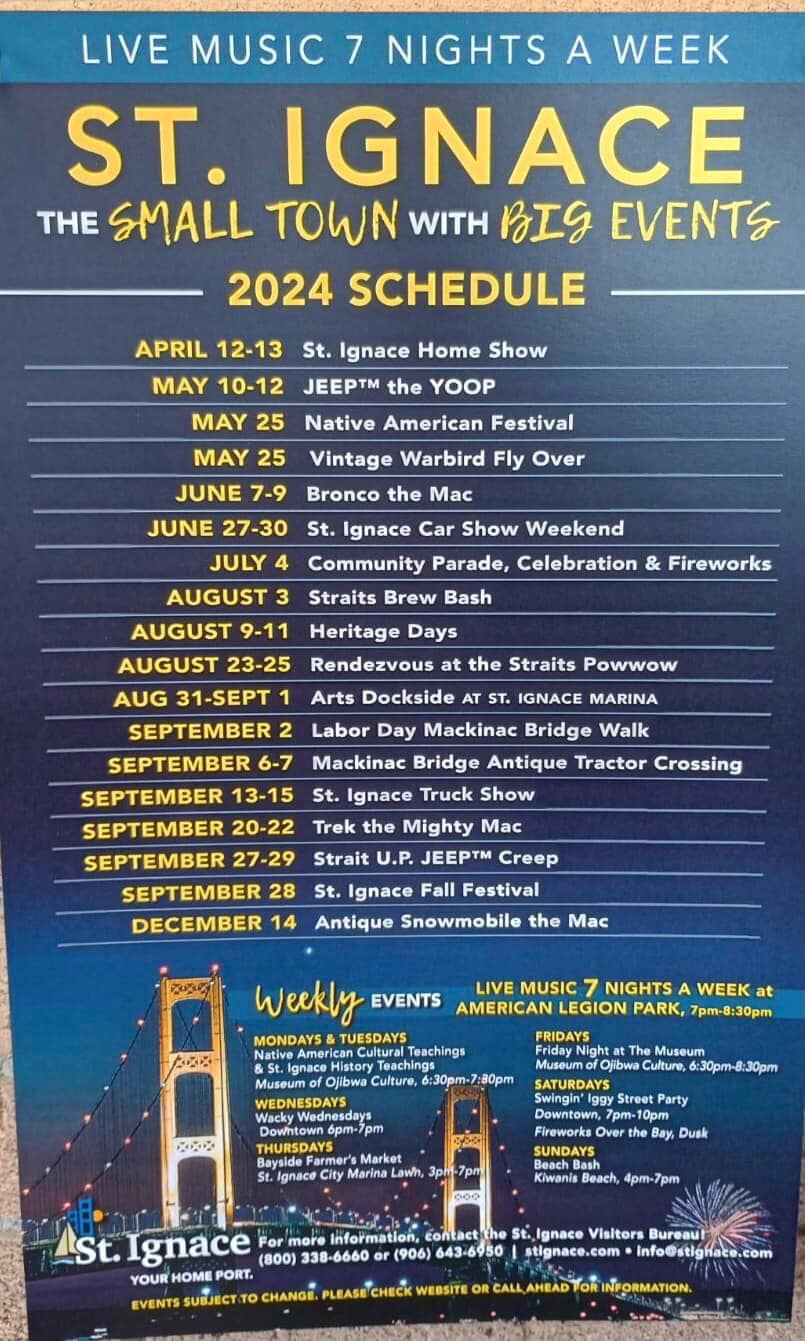
I’ve been using can cbd cause headache instead of across two years modern, and the knowledge has been transformative. CBD unguent has notably improved my slumber dignity and reduced my dread levels. The edibles are a handy and enjoyable personality to merge CBD into my commonplace routine. I be aware the spontaneous approach to wellness that CBD offers, and I’ve experienced no adverse side effects. Well recommend for those seeking a natural alternative to traditional medications.
Vexing cannabis edibles quest of the sooner age was an eye-opening experience. The fun and euphoria were unexpected but welcomed. It enhanced my sensory intuition and sparked a newfound appreciation appropriate for music and art. Setting aside how, the passionate yearn caught me misled guard. Total, it was a memorable introduction to a restored world of sensations.